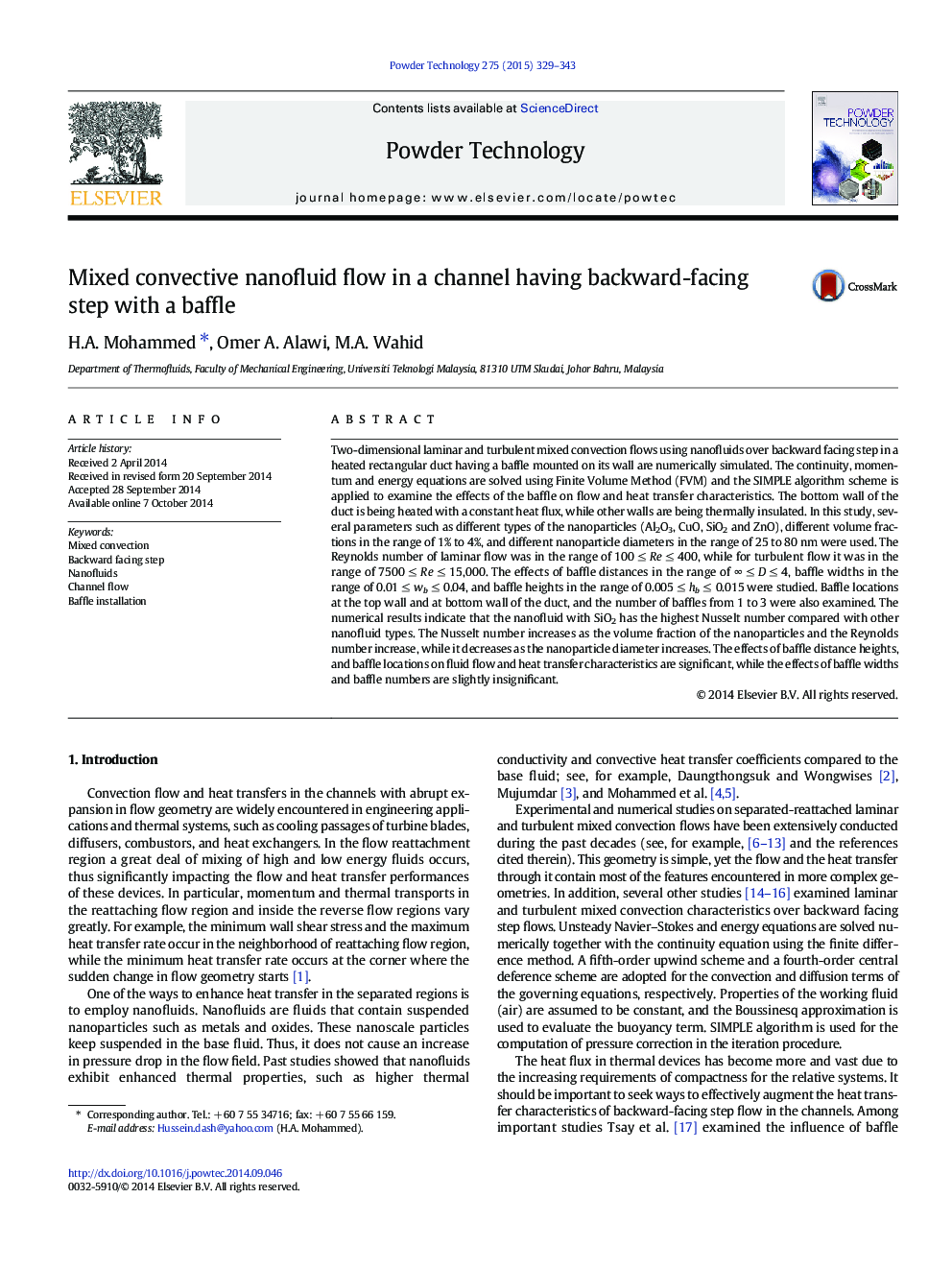| کد مقاله | کد نشریه | سال انتشار | مقاله انگلیسی | نسخه تمام متن |
|---|---|---|---|---|
| 235686 | 465644 | 2015 | 15 صفحه PDF | دانلود رایگان |
• Studied mixed convection over a backward facing step with baffle installation
• Solved laminar flow governing energy equations using Finite Volume Method
• Investigated the effect of geometrical parameters, nanofluid type, and its concentration
• Analyzed the effects of particle diameter and Reynolds number
• Found that baffle's distance, height, and location are significant to enhance the heat transfer
Two-dimensional laminar and turbulent mixed convection flows using nanofluids over backward facing step in a heated rectangular duct having a baffle mounted on its wall are numerically simulated. The continuity, momentum and energy equations are solved using Finite Volume Method (FVM) and the SIMPLE algorithm scheme is applied to examine the effects of the baffle on flow and heat transfer characteristics. The bottom wall of the duct is being heated with a constant heat flux, while other walls are being thermally insulated. In this study, several parameters such as different types of the nanoparticles (Al2O3, CuO, SiO2 and ZnO), different volume fractions in the range of 1% to 4%, and different nanoparticle diameters in the range of 25 to 80 nm were used. The Reynolds number of laminar flow was in the range of 100 ≤ Re ≤ 400, while for turbulent flow it was in the range of 7500 ≤ Re ≤ 15,000. The effects of baffle distances in the range of ∞ ≤ D ≤ 4, baffle widths in the range of 0.01 ≤ wb ≤ 0.04, and baffle heights in the range of 0.005 ≤ hb ≤ 0.015 were studied. Baffle locations at the top wall and at bottom wall of the duct, and the number of baffles from 1 to 3 were also examined. The numerical results indicate that the nanofluid with SiO2 has the highest Nusselt number compared with other nanofluid types. The Nusselt number increases as the volume fraction of the nanoparticles and the Reynolds number increase, while it decreases as the nanoparticle diameter increases. The effects of baffle distance heights, and baffle locations on fluid flow and heat transfer characteristics are significant, while the effects of baffle widths and baffle numbers are slightly insignificant.
Figure optionsDownload as PowerPoint slide
Journal: Powder Technology - Volume 275, May 2015, Pages 329–343
